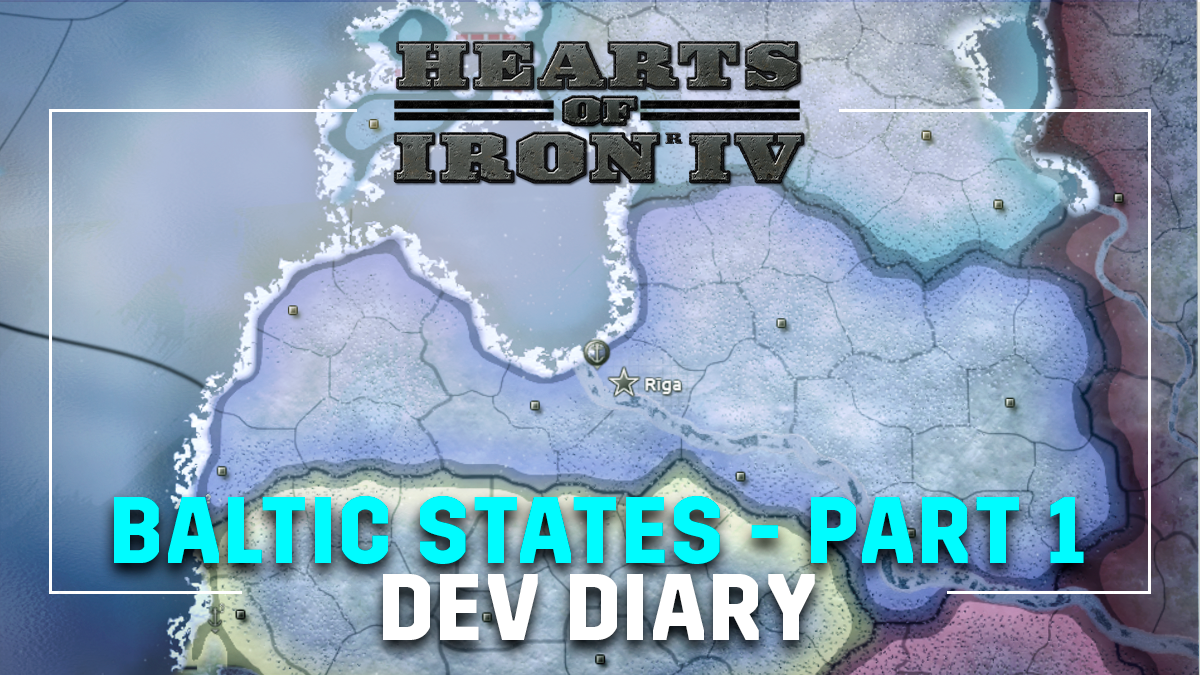
Hello and welcome to another dev diary for the Barbarossa patch! Today I’m back with you to talk about not one, not two, but three new focus trees coming with the upcoming expansion: Latvia, Lithuania, and Estonia!

The Baltic States were in a difficult position in the build-up to world war 2; only recently liberated from Russian and German rule and less than 20 years on from a bloody struggle against both imperialist powers. In the 30s, each of the states had established authoritarian rule in fear of German and Soviet invasions, and a player hoping to survive as a Baltic state must take some extreme measures to overcome these overwhelming odds...
The Baltic States, like the Chinese, will share some branches of their focus tree while other branches will be unique to each country. This week I am going to talk about the shared branches; the industrial branch and the communist political branch.
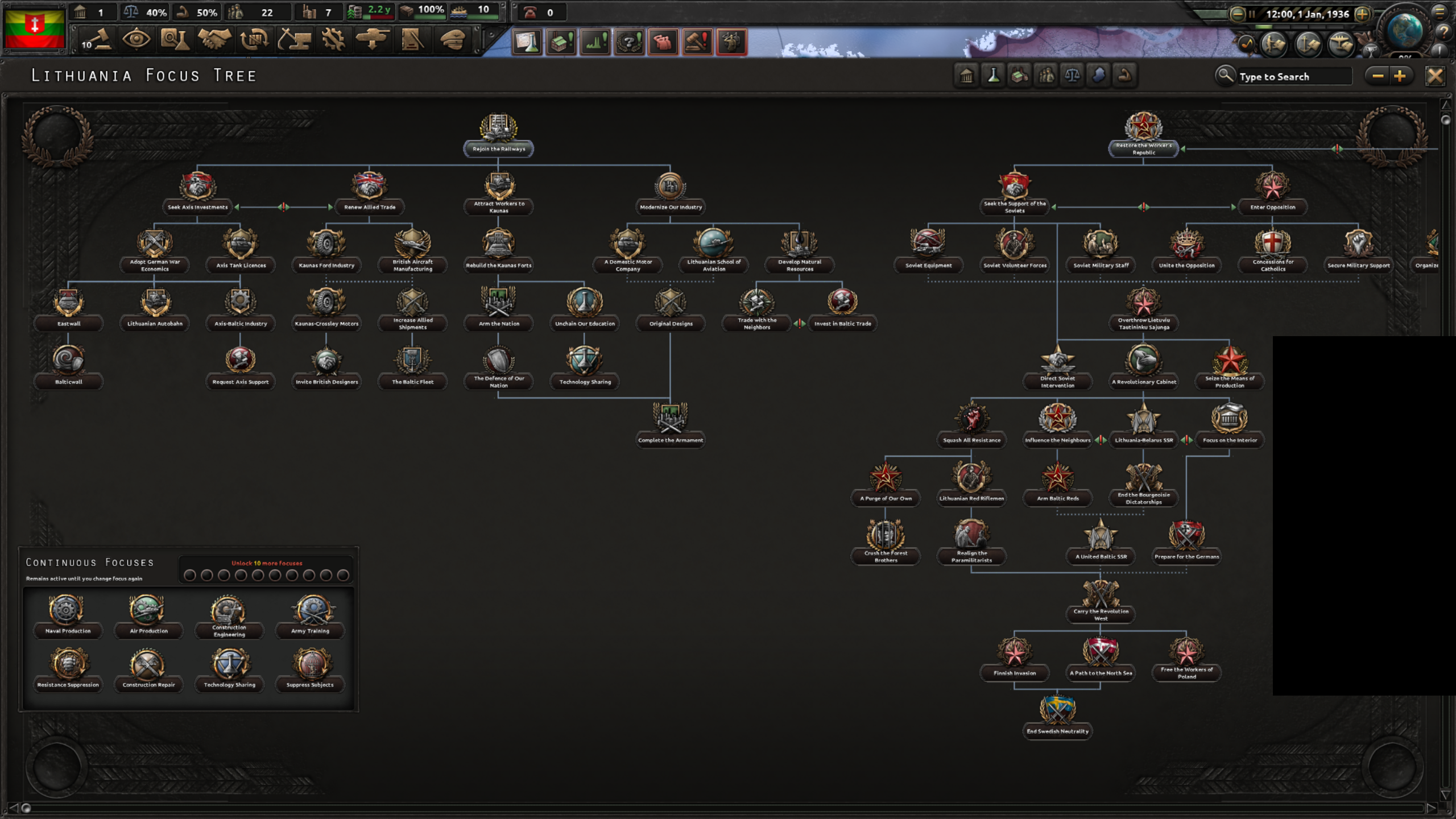
Starting up with the industrial branch, each Baltic state was in something of a similar situation economically; relying heavily on foreign investment and equipment for their industry and armed forces. As such, each Baltic state may decide if they wish to put their faith in the democratic nations to supply their economy, or the Axis powers to fuel the war machine.
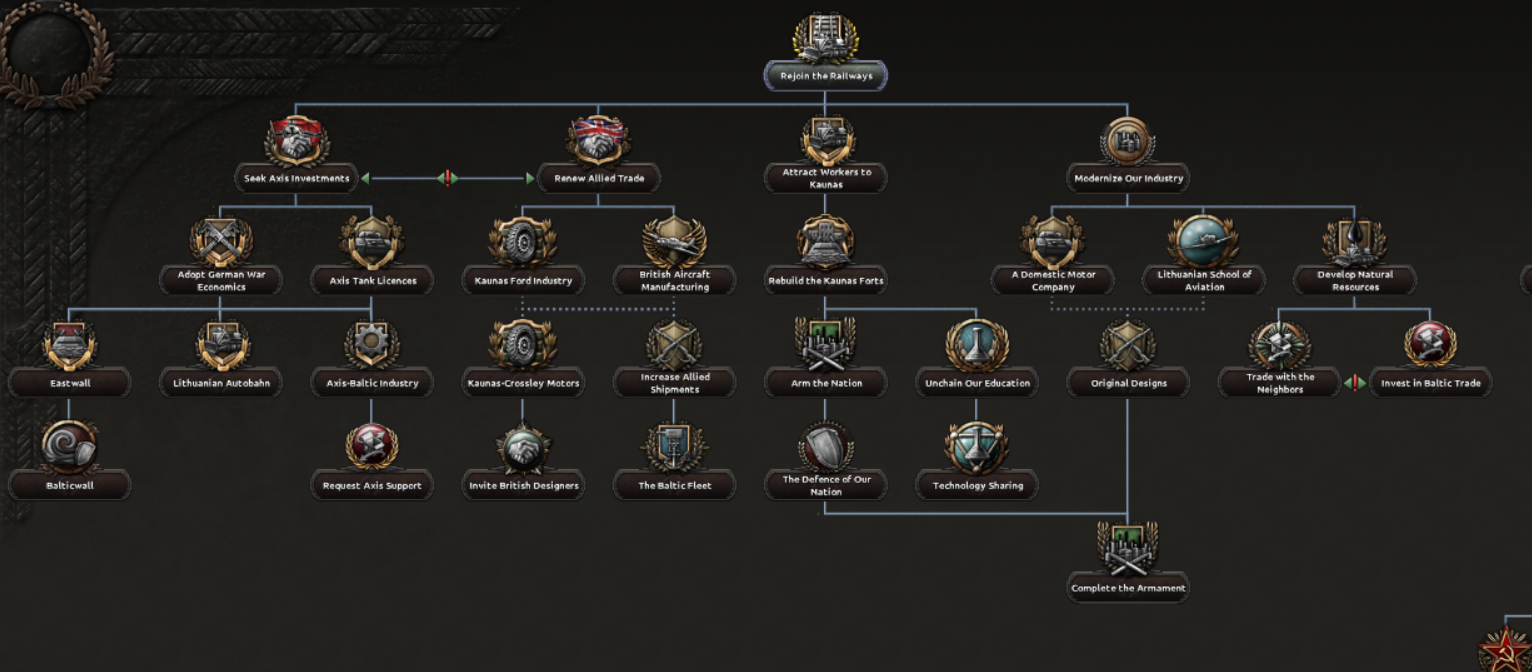
The other common issue facing the Baltics was that they had previously been occupied by the Soviets and Germany, and their industry was sorely lacking. So, the Balts can attract workers to their capital and begin their rearmament and develop their research sector.
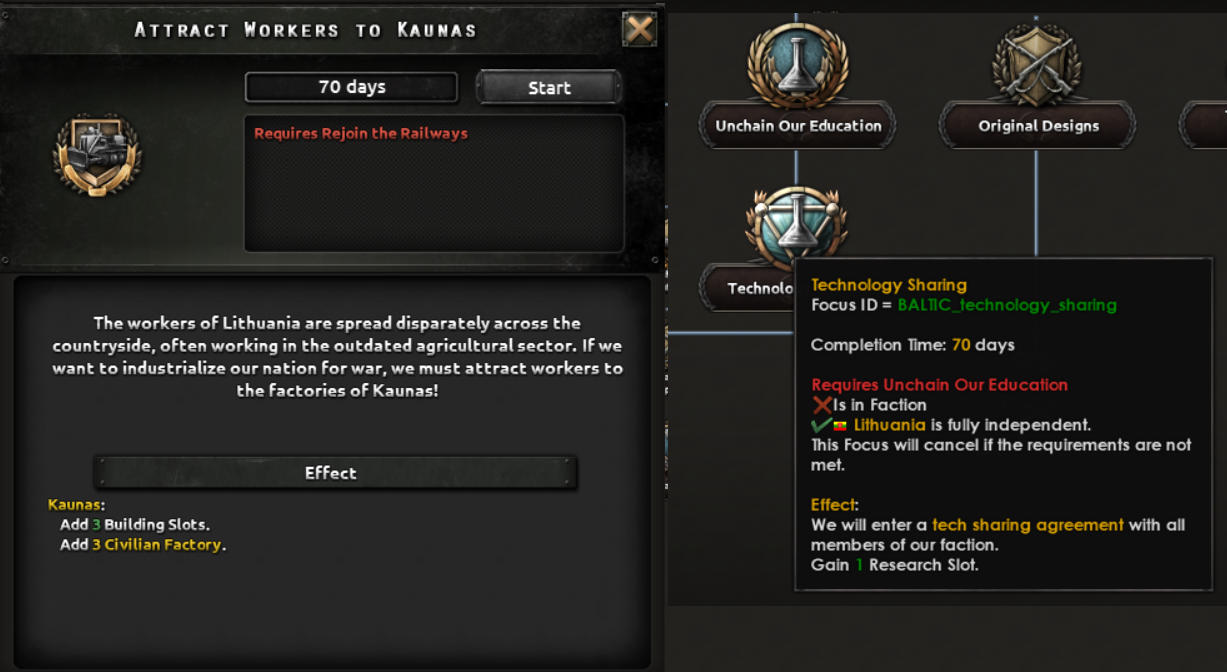
Lastly, by modernising their industry, the Baltic states may become much more self-sufficient and end their reliance on foreign powers to fuel their war machine. They may expand raw resource production in their nation, which for Estonia and Latvia means the development of their on-map resources.
Lithuania however was uniquely very reliant on its agriculture, and thus starts the game with a variant of the “Agrarian Society” national spirit which can be slowly turned into a great benefit via their industrial tree.

Next up, each of the Baltic States had recently endured bloody struggles against the USSR, so popular support for communism was vanishingly low. A Baltic state hoping to overthrow the government and establish an independent communist state must do so through war.
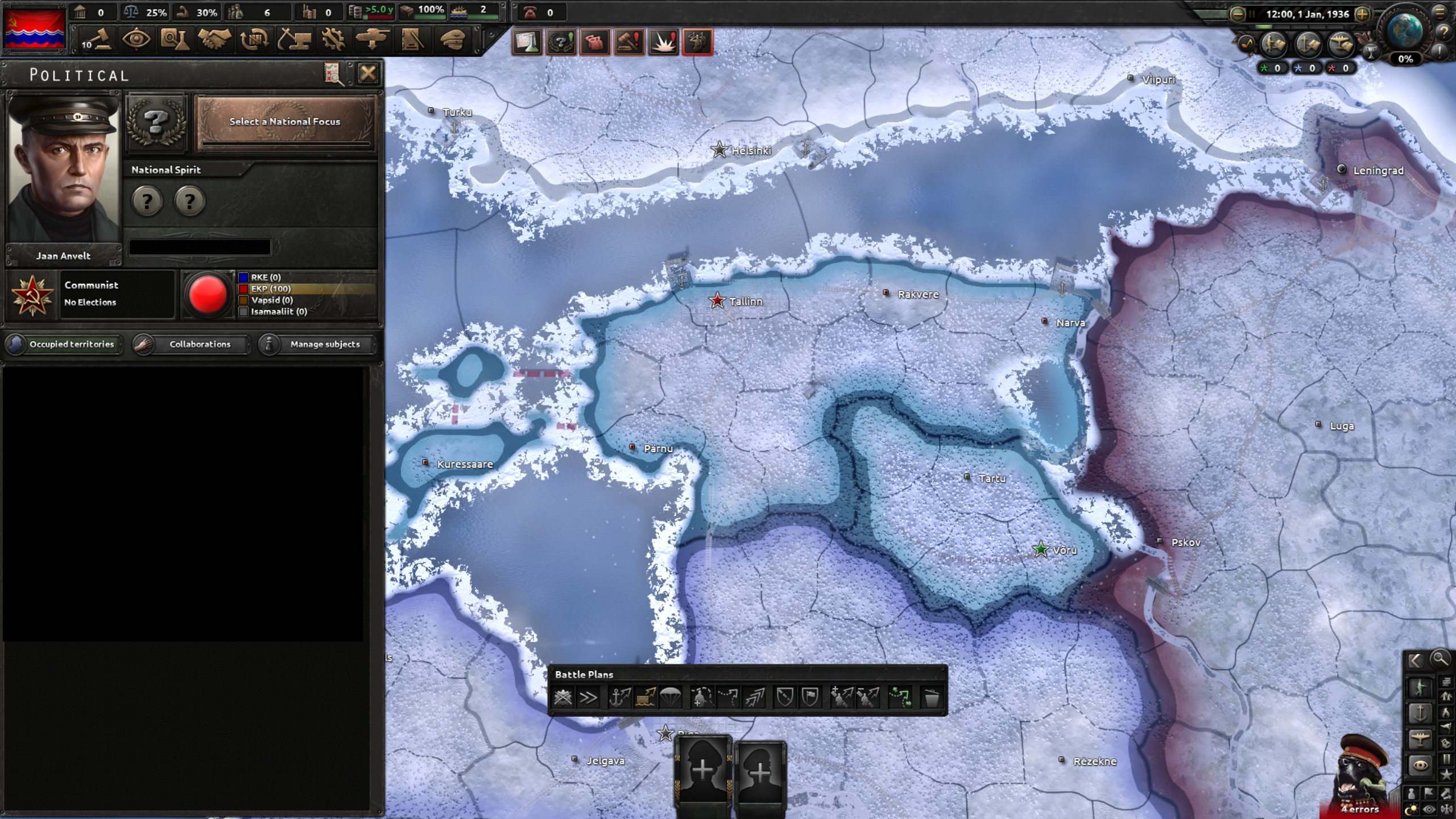
The Balts can either choose to rely on the Soviet intervention or attempt to reconcile relations with the Baltic lower classes and try to maintain their independence while establishing communism on their own.
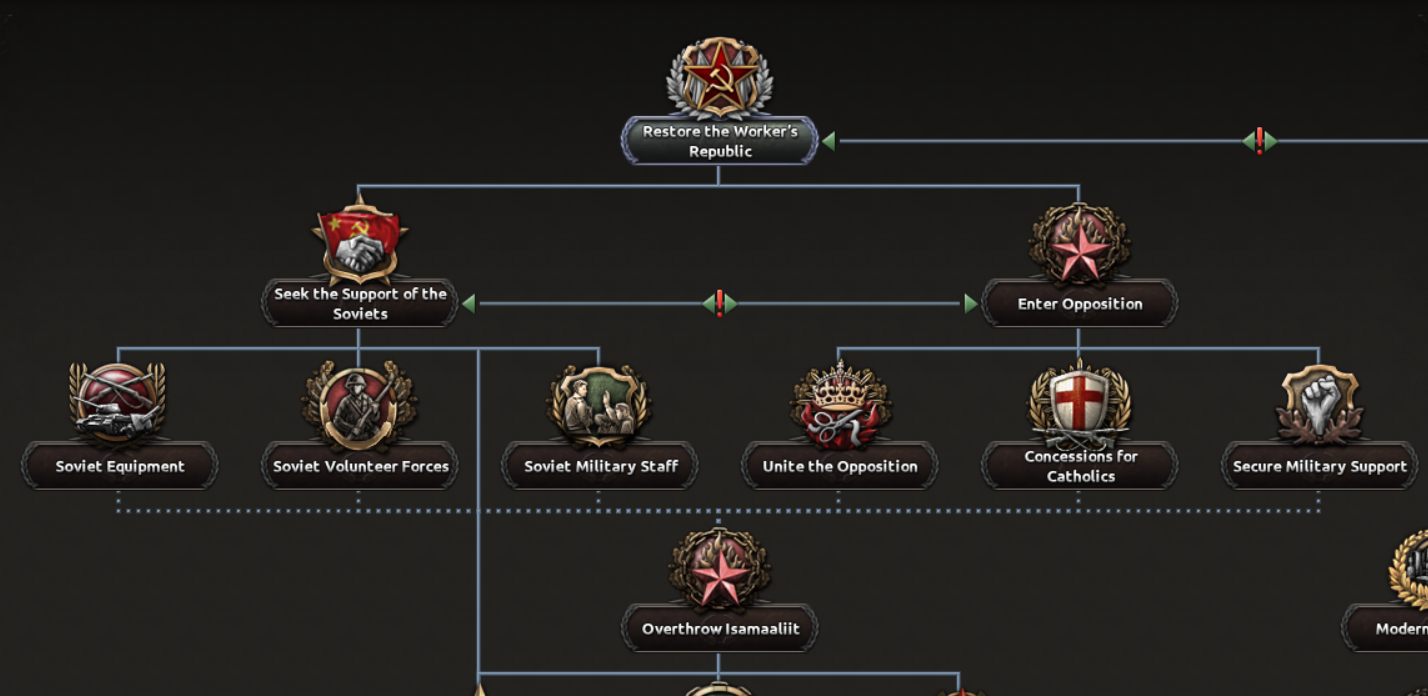
Once the revolution is done and your nation is communist, the player will have the option to re-establish the Lithuania-Belarus SSR. In the case you sided with the Soviets, the USSR will grant you their half of Belarus with the rest coming either through war or the Molotov-Ribbentrop Pact.
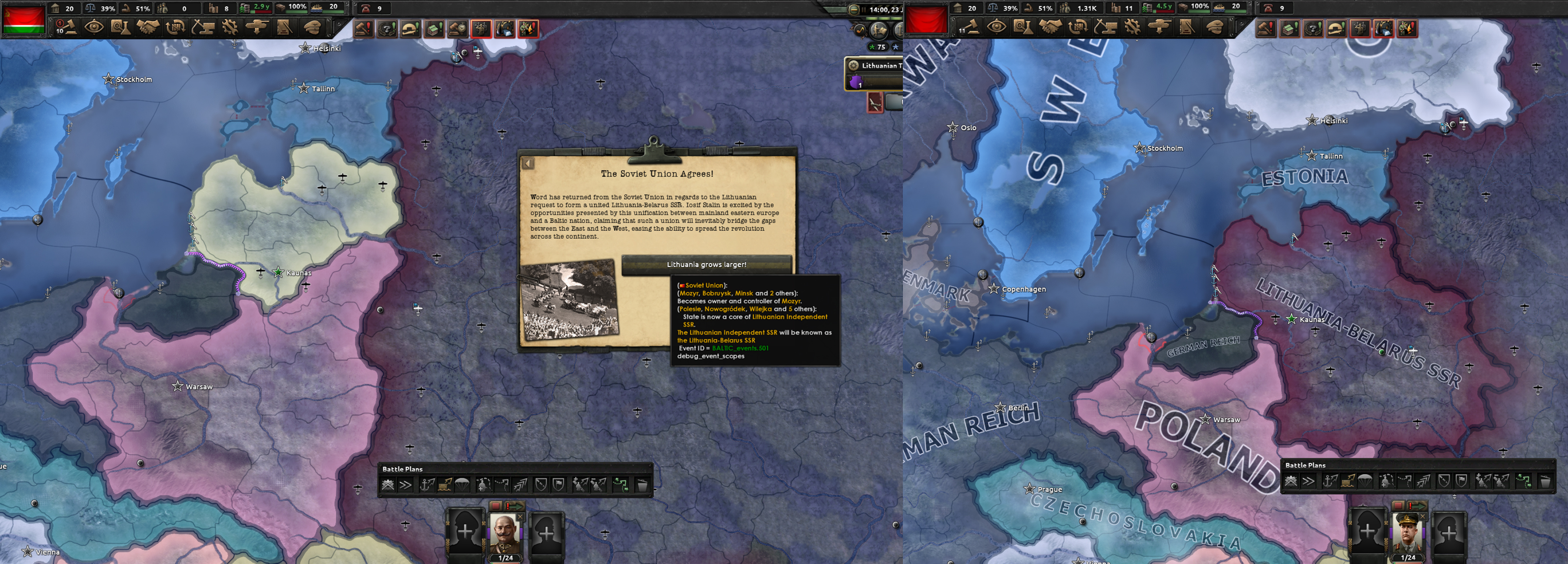
If you are independent however, Belarus must be acquired through adversarial means. The Baltic state must propagandise support for unification in Belarus similar to the Spanish Civil War garrison control system. When time runs out, Belarus will be released and fight a civil war; the victor will be annexed into either the victorious Baltic nation or the USSR.

The Baltic nation will also be able to try to convert their neighbours to communism through a propaganda war. No matter which path the Baltic player takes to establish socialism across the Baltics; they will be able to form the United Baltic SSR.

From there, they may use their newfound strength against Scandinavia and Poland and achieve communism across the entire Baltic Sea.
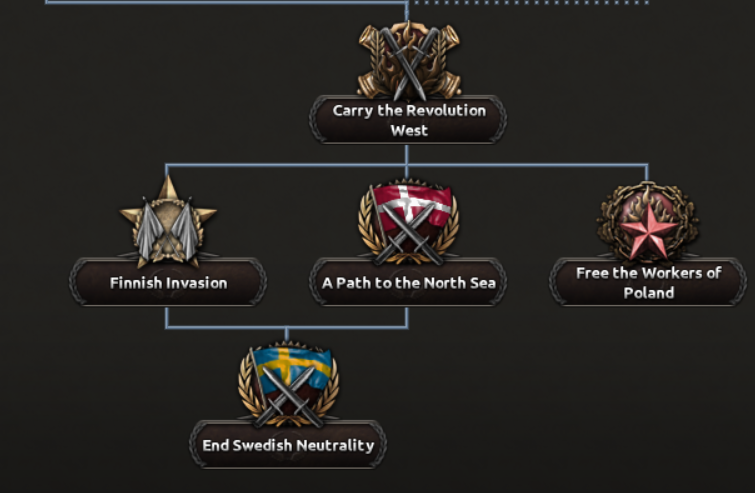
That’s all for the Baltic States this week, next week I will be talking about the entirely unique political trees for each Baltic state.
******************************************************************
Something worth bringing up here is we did make some changes to the Polish tree since we last talked about it. Firstly, I do just want to show off some of the new focus icons we got since I wrote those dev diaries and I feel like our artists have done a really great job. There are more, but I don't want to spoil all of them just yet!
img]
https://cdn.cloudflare.steamstatic.com/steamcommunity/public/images/clans/9948323/813b8df0afcb3a3f28ee7bfa2d99be3dd753c2df.png[/img]
We originally planned to have Poland get an off-map reactor to essentially get them control of 1 nuke during play as an exile nation. This to reflect their role in the nuclear project, but we were already a bit on the fence on if this was too immersion breaking for the gameplay purpose, and it seemed many of you thought so too so we removed the off-map reactor and moved the focus to the industry branch.
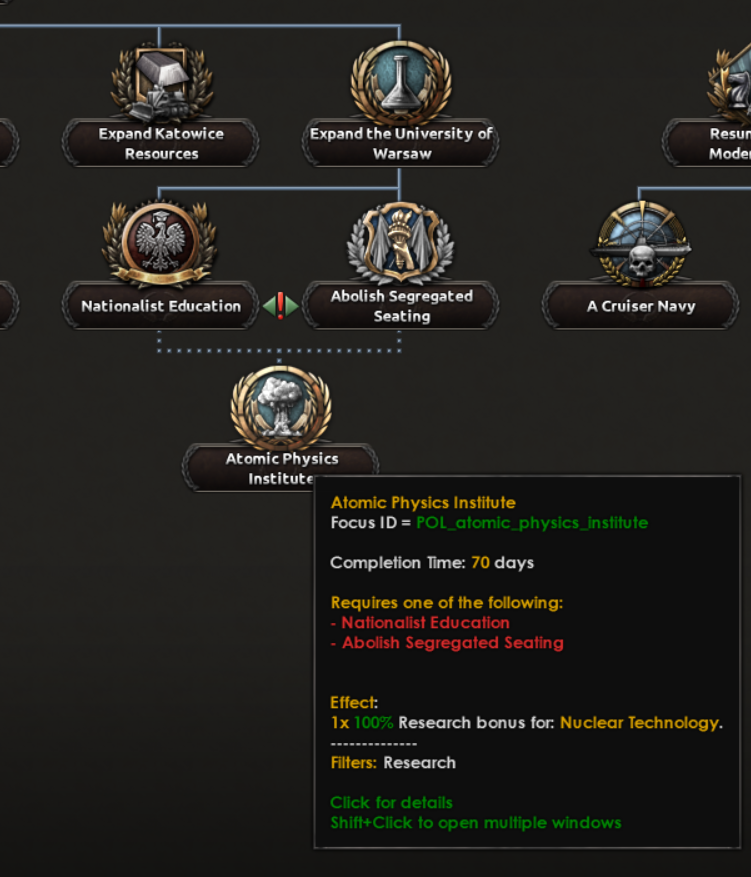
Next, I managed to find time to implement Karl Albrecht von Habsburg as an option for monarchist Poland. He has his own branch which involves pressing the Habsburg claim on Czechoslovakia.
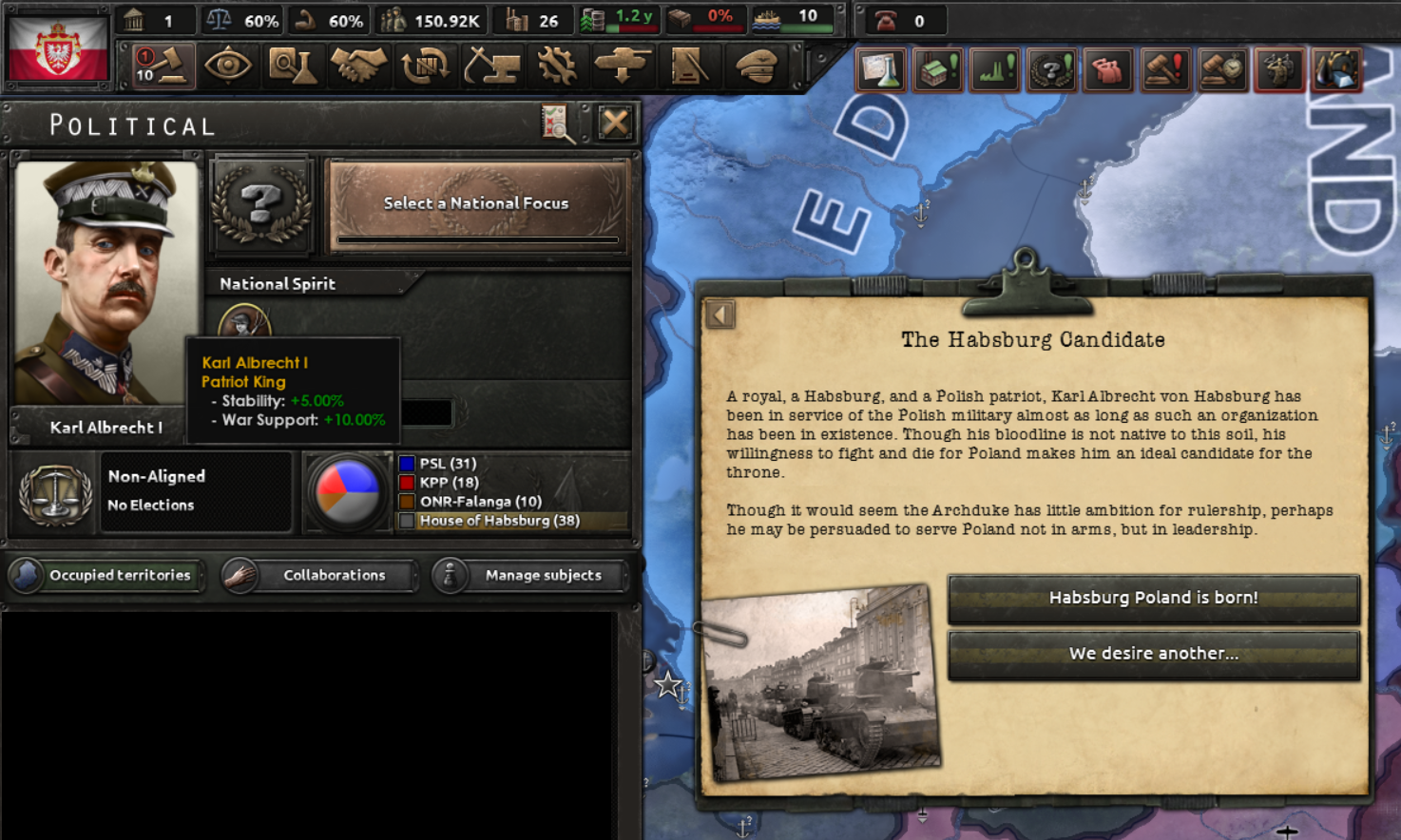

Claiming Czechoslovakia uses the same decision system as claiming Lithuania for the Commonwealth branch, and once the two nations are united, the ambition of West-Slavic unification is realised and the new nation may declare itself protector of the western Slavic peoples living in Germany.

Karl Albrecht I was known for the service he provided to the Polish army, and it’s unlikely that willingness to serve would vanish upon becoming King. So, as Soldier-King, he will gain a plethora of unique personality traits as well as becoming a field marshal.

With Hungary aligning itself with Poland’s enemies, Karl Albrecht can demand that Horthy step down in favour of Otto von Habsburg and force Hungary down their Habsburg path, diplomatically aligning them with Habsburg Poland.

Galicia-Lodomeria represented Habsburg rule over Poland and as such, Karl Albrecht may restore the Diet of Galicia which as well as giving the Royal Sejm national spirit, moves the nation’s capital to Krakow. While this centralises the capital between Poland and Czechoslovakia and surrounds the capital in defensible hills, the old Polish capital is also very close to the German border and may prove an easy target…
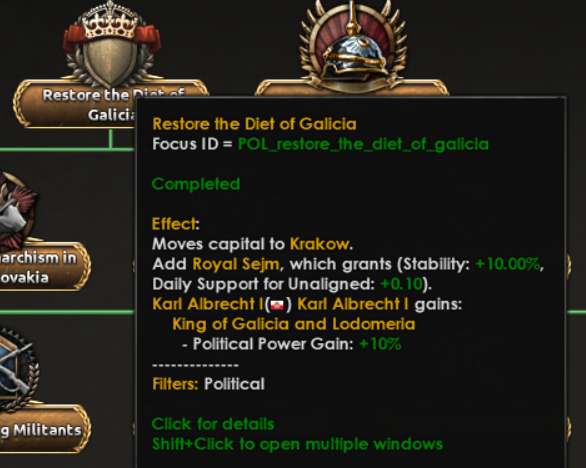
I feel I should also clarify the mechanics behind electing a monarch. When the Fulfil the 5th of November Act focus is complete, candidates come forward and present themselves to be King. So while it would make little sense for the regency council to reach out and invite candidates like Pavel Bermondt-Avalov to be King, Pavel is certainly the type to try and present himself for King.
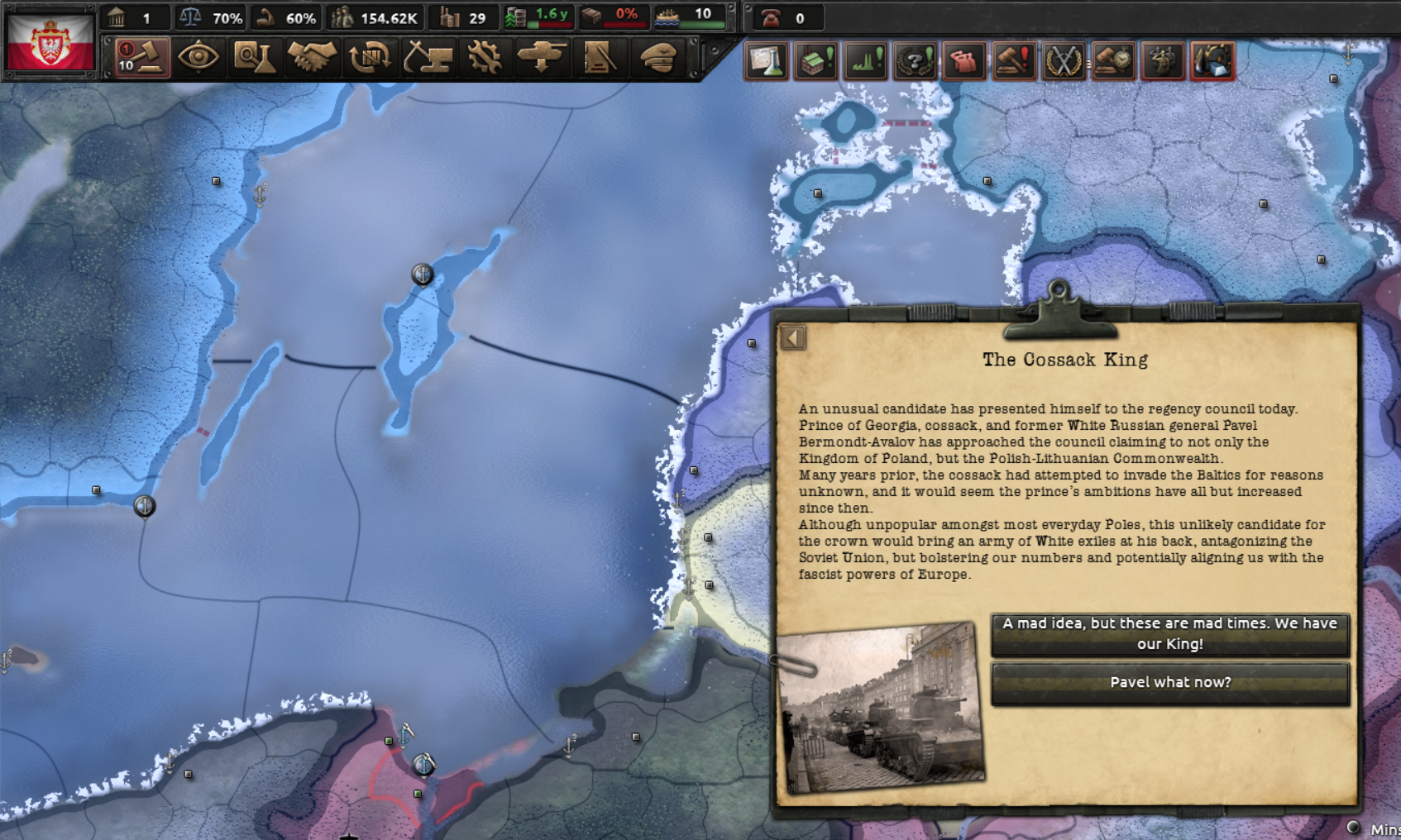
The final thing I'd like to mention is that during testing we noticed that it was quite a chore to scroll back and forth between the Polish tree with it being so wide, so I implemented a system where the Polish tree automatically compacts itself when you've chosen a political path.
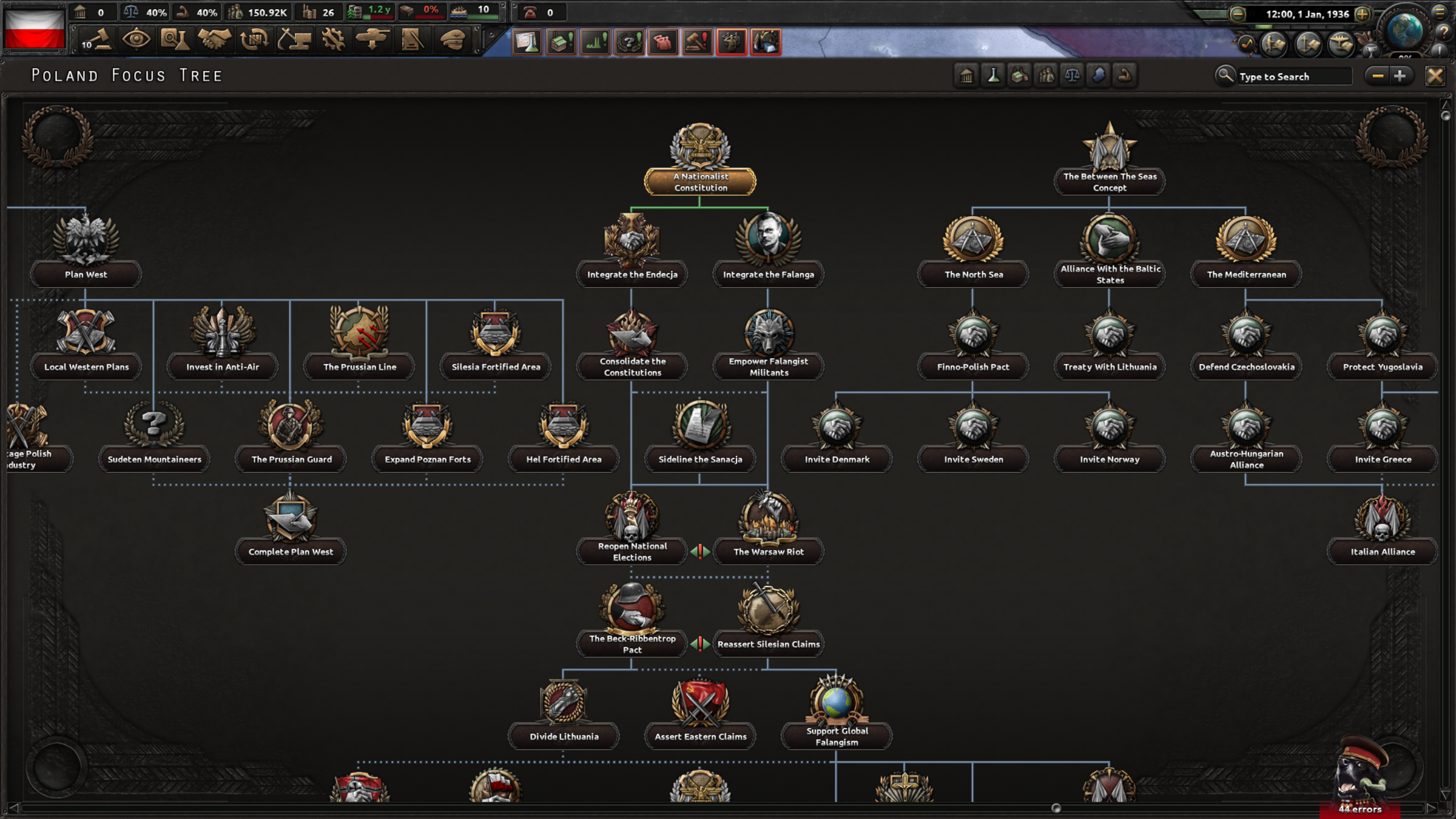
That’s all for this week, next week we will be covering the paths unique to each Baltic state and for now I’ll leave you with this teaser.

Read the full article:
{LINK REMOVED}https://pdxint.at/3hse2JY





















